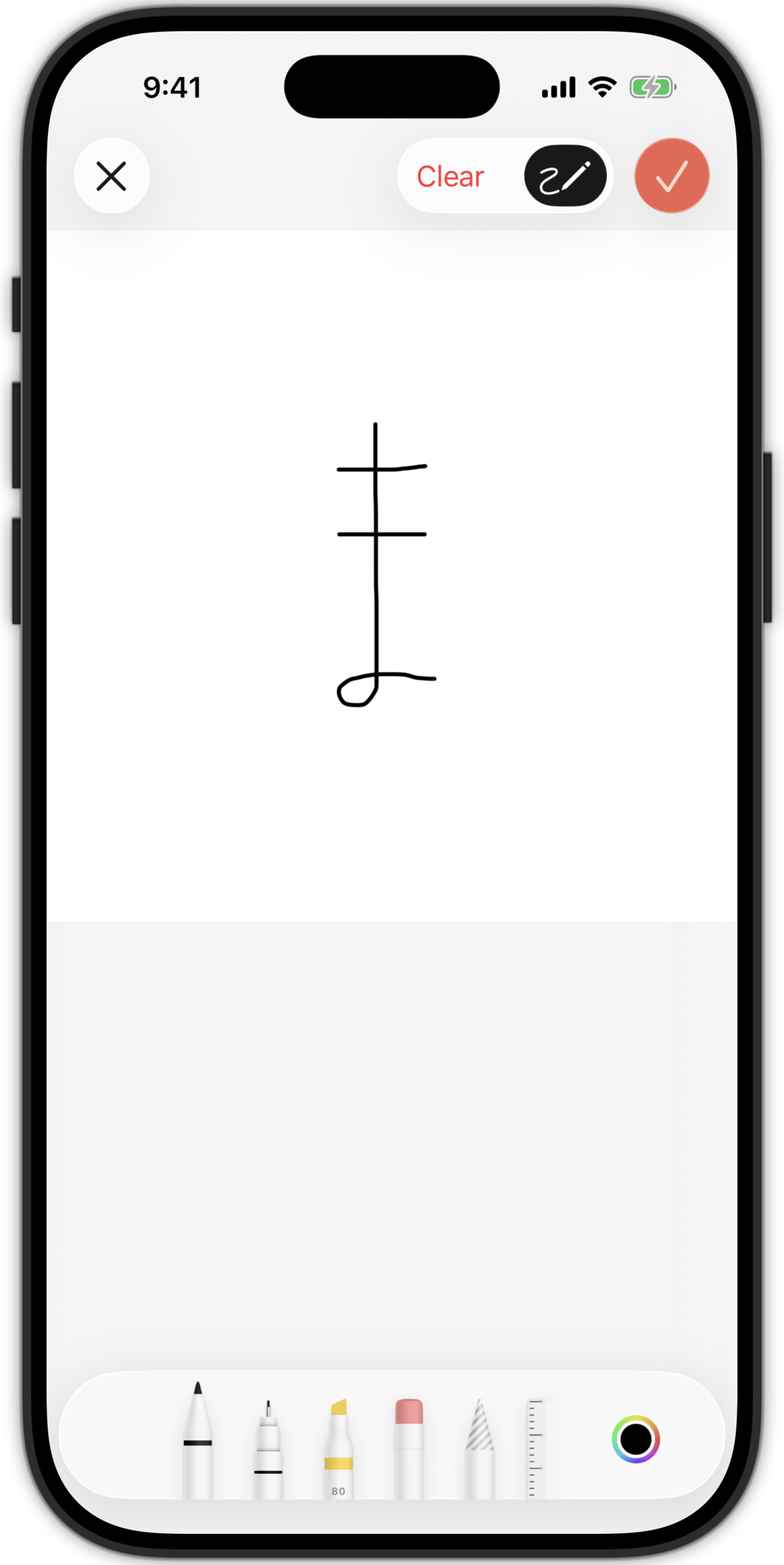There’s 2 types of cards:
Standard Cards are stand-alone cards that support text, images and drawings. Annotation Cards are cards created by labeling regions of an image. They stay linked to their original image to preserve their original context.
Standard Cards use any combination of text, images and drawings for the question and answer. These are the most common and versatile types of cards.
On iPhone & iPad Tap on the + menu, then tap on New Card.
On Mac Click on the + button on the toolbar.
On Mac & iPad Click on File -> New Card in the menu bar.
New cards are added to the folder you are currently in.
Add images or drawings to a card by using the Ellipsis (…) menu besides the question or answer to select what you want to replace.
Images can be added from Camera, Photo Library or a file.
On iPad & Mac, you can also Drag and Drop images into the question or answer area to replace the current question or answer.
By selecting Sketch on the question or answer's Ellipsis (…) menu, you can doodle your question or answer on a blank canvas:

Additionally, tapping on an image brings the Drawing Editor for the image. This enables adding markers and labels to the image, which is useful for arrows, hints and covering areas of the image.

Annotation Cards are a type of card used for learning from labeled regions in an image. This is useful for learning parts of a diagram or photo. The original image is preserved, helping you create a mental connection between the question, answer and their original context.
On iPhone & iPad Tap on the + menu, then on From Photos or From Camera, both under New Annotation Cards.

On Mac Click on the New Annotation Cards ![]() button on the toolbar.
button on the toolbar.
This will launch an image picker or the camera. Once you finish selecting an image, you can start adding annotations using the Add Annotation ![]() button, which will add an Annotation Card in the middle of the image or wherever there's space.
button, which will add an Annotation Card in the middle of the image or wherever there's space.
The area that it encloses is the question. The answer is the text area below it. To edit this Annotation Card:
You can add more than 1 annotation to the image. They are all independent cards that can be studied and organized separately, but they are all linked to the original image.